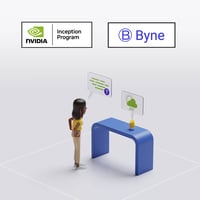This blog post is a brief summary of our conference talk "DevOps and Scalability Guide for...
DevOps and Scalability Guide for On-Prem LangChain Apps
This guide covers key aspects of deploying and maintaining production LangChain applications in private Kubernetes environments. Our approach focuses on secure, scalable deployment using modern DevOps practices and tools.
Serving Options
For private Kubernetes deployments, LangChain applications are typically containerized and deployed through GitLab's CI/CD pipeline. The application infrastructure is defined and maintained through Terraform, ensuring consistent environment management and deployment across your organization.
Deployment Architecture
The core deployment revolves around Kubernetes clusters, with specialized node pools for different workloads. GPU nodes handle model inference through vLLM or Triton, while standard nodes manage the application logic and supporting services. This separation allows for efficient resource utilization and easier scaling of compute-intensive components.
Infrastructure Components
The system relies on several key components:
MongoDB serves as the vector storage solution, offering robust scaling capabilities and familiar operational characteristics for most DevOps teams. Document storage is handled through MinIO, providing S3-compatible storage within your private infrastructure.
Authentication is managed through SuperTokens, offering a self-hosted authentication solution that integrates well with existing enterprise systems. All secrets and credentials are managed through HashiCorp Vault, ensuring secure and centralized secrets management.
Message queuing and asynchronous processing rely on RabbitMQ, enabling reliable document processing and system communication. The entire system is monitored through a combination of Prometheus, Grafana, and Sentry, providing comprehensive visibility into both system health and application behavior.
Infrastructure as Code
Terraform manages the entire infrastructure, with modular configurations for different components. This includes Kubernetes cluster setup, storage provisioning, and monitoring configuration. The Infrastructure as Code approach ensures that all environments remain consistent and that changes are tracked through version control.
CI/CD Pipeline
GitLab CI handles both application deployment and infrastructure provisioning. The pipeline validates infrastructure changes before applying them and manages deployments across different environments. Container images are stored in GitLab's private container registry, ensuring full control over your deployment artifacts.
Data Processing Architecture
Document processing follows a defined pipeline:
- Documents are uploaded to MinIO
- Processing jobs are queued in RabbitMQ
- Vector embeddings are stored in MongoDB
- LLM inference is handled by vLLM/Triton
This architecture ensures reliable processing even under heavy loads and provides clear separation of concerns for each component.
Security Implementation
The entire system operates within private networks, with strict network policies controlling communication between components. SuperTokens handles authentication and authorization, while HashiCorp Vault manages secrets distribution. All components run within private subnets, accessible only through internal load balancers.
Monitoring and Operations
The monitoring stack combines:
- Prometheus for metrics collection
- Grafana for visualization and alerting
- Sentry for error tracking and debugging
This provides comprehensive visibility into system health, performance metrics, and application behavior. Key metrics include:
- Model inference latency and throughput
- Document processing queue length
- Vector store query performance
- Resource utilization across nodes
Production Readiness
For production deployment, ensure:
- All components run in high-availability mode
- Proper backup procedures are in place
- Disaster recovery plans are tested
- Security policies are reviewed and approved
- Resource scaling policies are configured
Regular security audits and penetration testing should be part of your operational procedures. Keep all components within private subnets and implement proper network segmentation for security compliance.
Remember to implement proper horizontal scaling policies for both application components and GPU resources to handle varying loads efficiently while maintaining cost control.

